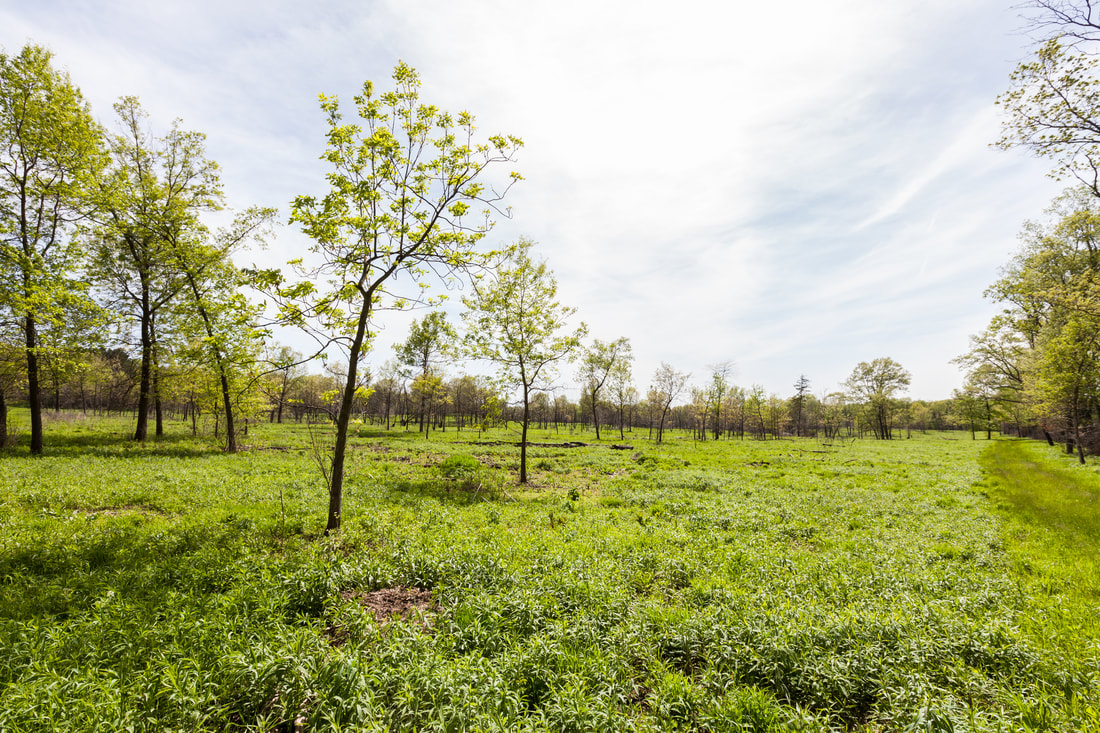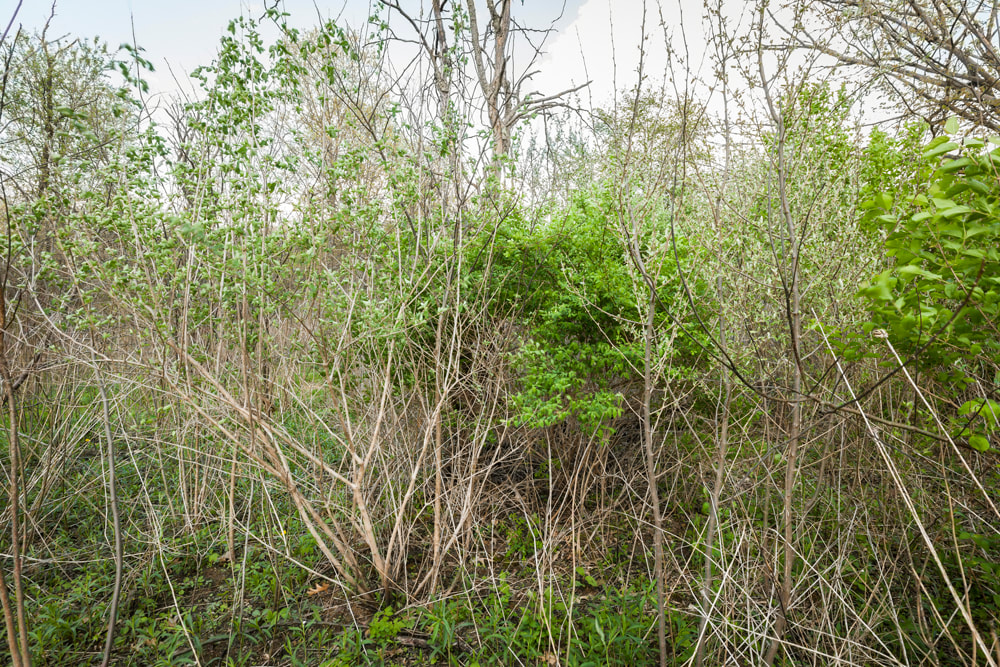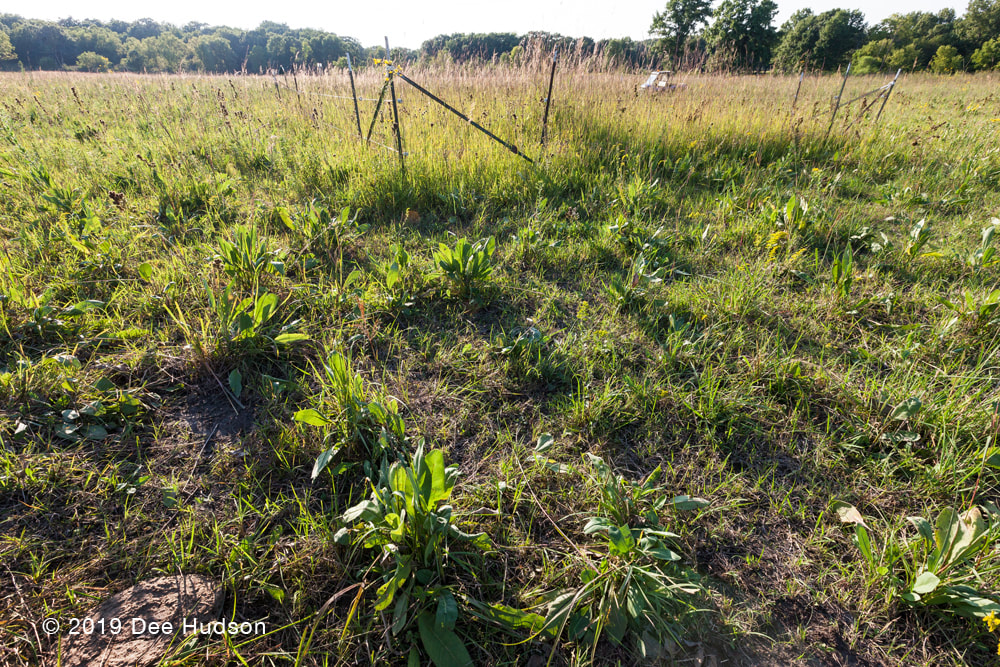“Today you can stand anywhere on the 23-acre plot and see all the way across it in any direction. Previously, the woody invasives blocked the view. Now the prairie species will have space and sunlight to bloom and thrive.” --Mike Carr, Orland Prairie Steward By Dee Hudson Nachusa Grasslands Steward Asian honeysuckle and autumn olive brush were quite thick throughout a 23-acre plot of Nachusa’s Orland Prairie. Ten years of mowing and burning these invasives had little effect, as the shrubs kept resprouting. As long as these invasive shrubs remained, the native plants were suppressed. In order to help restore Orland Prairie, Friends of Nachusa Grasslands applied for a stewardship grant from the Illinois Clean Energy Community Foundation. The objective of the Community Stewardship Challenge Grant Program of the Illinois Clean Energy Community Foundation is to encourage increased community participation in the care of natural areas and wildlife habitat managed by non-profit organizations in Illinois. The grant provided support to Friends of Nachusa Grasslands in a several ways: A Cash Donation Match Challenge
Volunteer Stewardship Challenge
Social Media Challenge
Equipment Purchase
Come see Orland Prairie! Join steward, Mike Carr, as he leads a tour of the project site at Nachusa Grasslands’ Autumn on the Prairie on Saturday, September 21, from 2:45 to 4 pm. See the areas newly-cleared of dense brush and enjoy the young plants moving into the bare ground. Friends of Nachusa Grasslands would like to thank Illinois Clean Energy Community Foundation for motivating and supporting our organization in this invaluable effort.
@illnoiscleanenergycommunityfoundation #CSgrantsIL #NAicecfdn
2 Comments
By Jenn Simons Nachusa Grasslands Science Extern On January 10th, 2019 I made a simple phone call to Nachusa Grasslands. Four months later, I was packing up my things to spend the summer living 480 miles east of my hometown. And with that, this Nebraska native ended up in an eastern tallgrass prairie state of both mind and place.  Jenn Simons Jenn Simons Prior to that fateful January day, as a graduate student at the University of Wisconsin-Madison I had narrowed down my research interests to the impact of conservation grazing on vegetation in midwestern prairies. My goal was to meet the requirements of my degree with a research project at the intersection of stewardship and applied ecology. Though the importance of disturbance to prairie management is well known, grazing on restored and remnant prairies has been a contested issue. Additional data to understand some of the trade-offs to using grazing for land management facilitate better understanding and application of the tools available in a land manager’s toolbox. The only thing that I was missing to begin my research was access to a herd of conservation grazers (nothing too significant, right?). During my quest to connect with folks using grazing as a land management tool in prairies, I ended up on the phone with Dr. Elizabeth Bach at Nachusa. As many of you know, it’s hard not to fall in love with a site as beautiful and biodiverse as Nachusa Grasslands. It’s even harder not to fall in love if that site also features a herd of grazing animals and the existing infrastructure to study their impacts. After my first conversation with Dr. Bach, I was sold. Nachusa was where I wanted to be, and the impact of their bison was what I wanted to study. In my case, and the case of many other grad students, there’s a gap in available funding between spring and fall school semesters. Grants and assistantships don’t always pan out, and many degrees in ecology require a large amount of data collection during the summer months (something rather at odds with working full time). Fortunately, 2019 marked the first summer for a Science Extern position at Nachusa. Open to all graduate students currently or beginning to conduct research specifically at Nachusa, the externship was to be awarded as an external grant to the student’s home university and paid as a salary, allowing the student to remain enrolled and continue receiving benefits. Just as the crew of seasonal employees spends their week supporting land stewardship needs throughout the summer, the role of the science extern was to support data stewardship needs throughout the summer. This position continues Nachusa’s history of encouraging research and providing opportunities for budding conservationists. With my fingers crossed, I submitted my application for the position and tried not to get my hopes up. I made a mental plan B (and C and D) for how I might be able to make my Nachusa research dreams come true if my application wasn’t successful. Work full time and collect data on the weekends? Take out loans? Choose a simpler research question? These are questions most grad students have had to seriously consider at some point. When sites like Nachusa are able to offer summer positions that merge science with practice, both the student and the site benefit from the results. Much to my delight, plan A came through, and I never looked back. Since May I’ve been assisting in collection, entry, and analysis of core ecological data for Nachusa while simultaneously collecting my own data. To answer my research questions, I’m leveraging twenty-two fenced plots (10mx18m) replicated across habitat types in the 1,500 acres of bison habitat that were designed and built by Bill Kleiman, Cody Considine, TNC staff, and collaborating scientists prior to the introduction of the bison in 2014. As opposed to keeping something inside a fenced in area, these fenced plots function as “exclosures” and keep bison outside the fenced area. Building on plant community data taken in 2014-15 and 2017-18, I’m collecting additional data to compare changes in the vegetation diversity, structure, and abundance along with soil compaction between grazed and ungrazed land over time. With the mentorship of Dr. Bach and my advisor, John Harrington, these data will be analyzed and contribute to both the advancement of my degree and the understanding of how bison have impacted Nachusa’s vegetation. In addition to the various science program tasks, opportunities abound to participate in stewardship activities and learn more about careers in ecology outside of academia. I’ve gotten to track Blanding’s turtle, set traps for small mammals, participate in evening moth surveys, observe rare plants in their natural settings, improve my R coding ability, utilize ArcGIS to create new maps, collect seeds and control weeds with the seasonal crew, and talk with highly knowledgeable volunteer land stewards. I can honestly say there’s no place I’d rather be this summer than at Nachusa Grasslands, and I’ve already become a better ecologist as a result.
|
Blog CoordinatorDee Hudson
I am a nature photographer, a freelance graphic designer, and steward at Nachusa's Thelma Carpenter Prairie. I have taken photos for Nachusa since 2012. EditorJames Higby
I have been a high school French teacher, registered piano technician, and librarian. In retirement I am a volunteer historian at Lee County Historical and Genealogical Society. Categories
All
Archives
January 2024
|
CONNECT WITH US |
|














 RSS Feed
RSS Feed